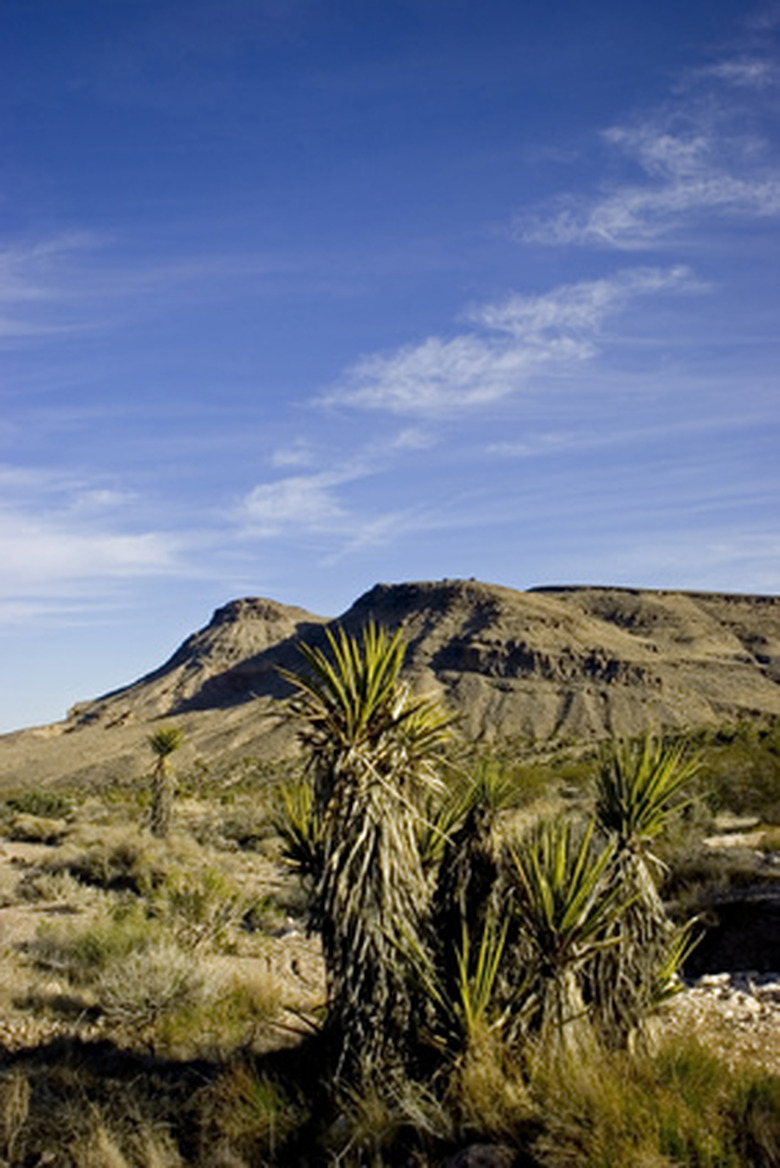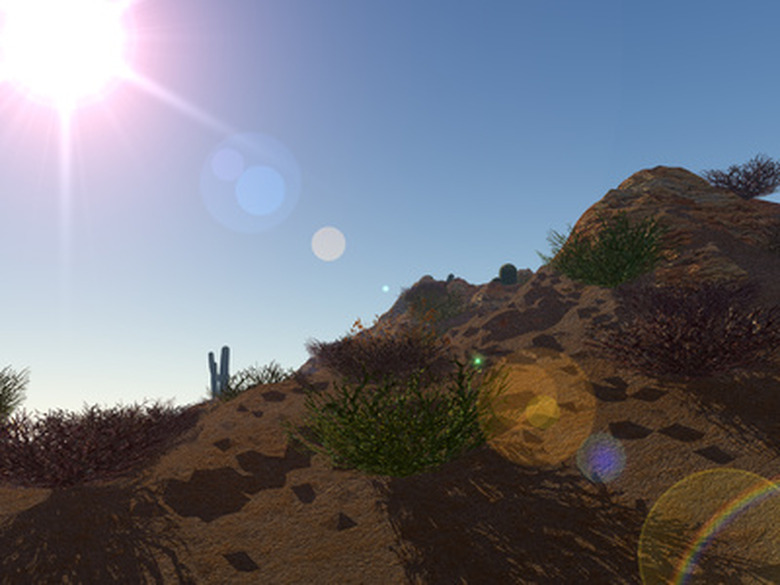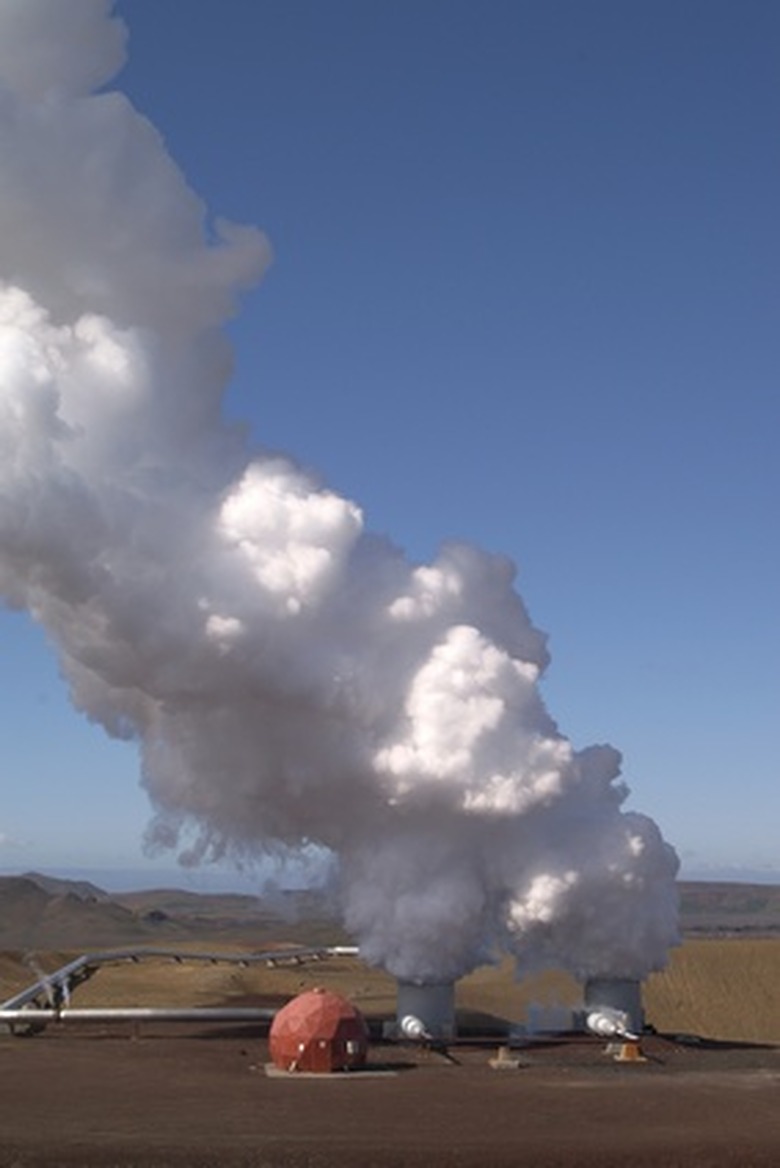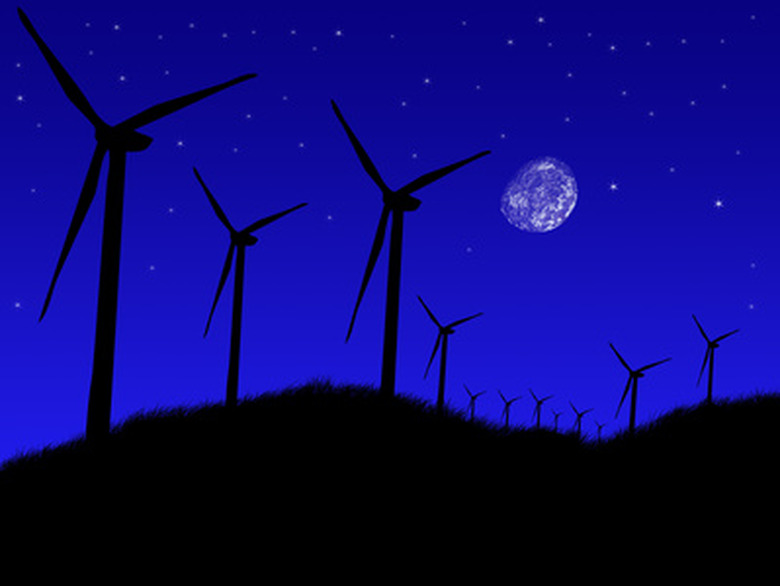The Desert's Renewable Resources
The push for renewable energy has intensified as a way to fight global warming and ensure energy independence from foreign oil producers. The most promising area for this development is the desert, where wind, solar and geothermal power can be utilized. And nowhere else on the planet are these three renewable resources being simultaneously pursued than the California Mojave Desert where, as of 2010, applications for solar, wind and geothermal projects are pending on 1.5 million acres.
Desert Solar
Desert Solar
Some of the most intense sunshine in the world exists in California's Mojave Desert, where a deluge of large solar energy projects are underway due to the proximity to large urban areas where the power is needed. Most of these projects are being proposed on federal Bureau of Land Management land where the agency has received requests that encompass more than 300,000 acres for the development of 34 large solar thermal power plants. In October 2010, Department of the Interior approved the first three large solar projects ever sited on Federal land. It is here that Brightsource broke ground on the California-Nevada border for its 3,500-acre Ivanpah Power Plant, the world's largest solar-thermal plant.
Desert Geothermal
Desert Geothermal
In direct-use geothermal systems, a well is drilled into a geothermal reservoir to provide stream to drive electric generators. While geothermal reservoirs appropriate for direct-use are widespread throughout the western United States, California, Hawaii, Nevada and Utah currently have operating geothermal power plants, as of 2010. (See Reference 4) In Southern California's Imperial Valley, 80 miles east of San Diego, there are three geothermal power sites that are part of the Salton Sea Known Geothermal Resource Area (SSKGRA). About 400 megawatts of geothermal electricity is produced from an underground reservoir of hot water near the Salton Sea. An additional 2,000 megawatts of power remains to be tapped and Cal Energy, the largest geothermal plant operator in the Imperial Valley, plans to build an additional 50-megawatt plant each year for the next decade.
Desert Wind
Desert Wind
There are pockets where high winds suitable for wind turbines are common in the Mojave Desert. The best known wind farm sits in the San Gorgonio Pass near Palm Springs, where air forced through the pass between the San Bernadino and San Jacinto Mountains creates wind speeds that average 15 to 20 miles per hour. The site hosts one of the three largest wind farms in the world, as of 2010, with more than 4,000 wind turbines on 70 square miles. Space there has run out and now the Tehachapi Pass, 75 miles north of Los Angeles, is the current hot spot for wind energy. It is here the largest wind power project in the country, the Alta Wind Energy Center, will operate 290 turbines scattered across 9,000 acres. By 2015, another 300 turbines are expected to be built.
Cite This Article
MLA
Barber, David. "The Desert's Renewable Resources" sciencing.com, https://www.sciencing.com/list-7619294-deserts-renewable-resources/. 9 January 2018.
APA
Barber, David. (2018, January 9). The Desert's Renewable Resources. sciencing.com. Retrieved from https://www.sciencing.com/list-7619294-deserts-renewable-resources/
Chicago
Barber, David. The Desert's Renewable Resources last modified March 24, 2022. https://www.sciencing.com/list-7619294-deserts-renewable-resources/



